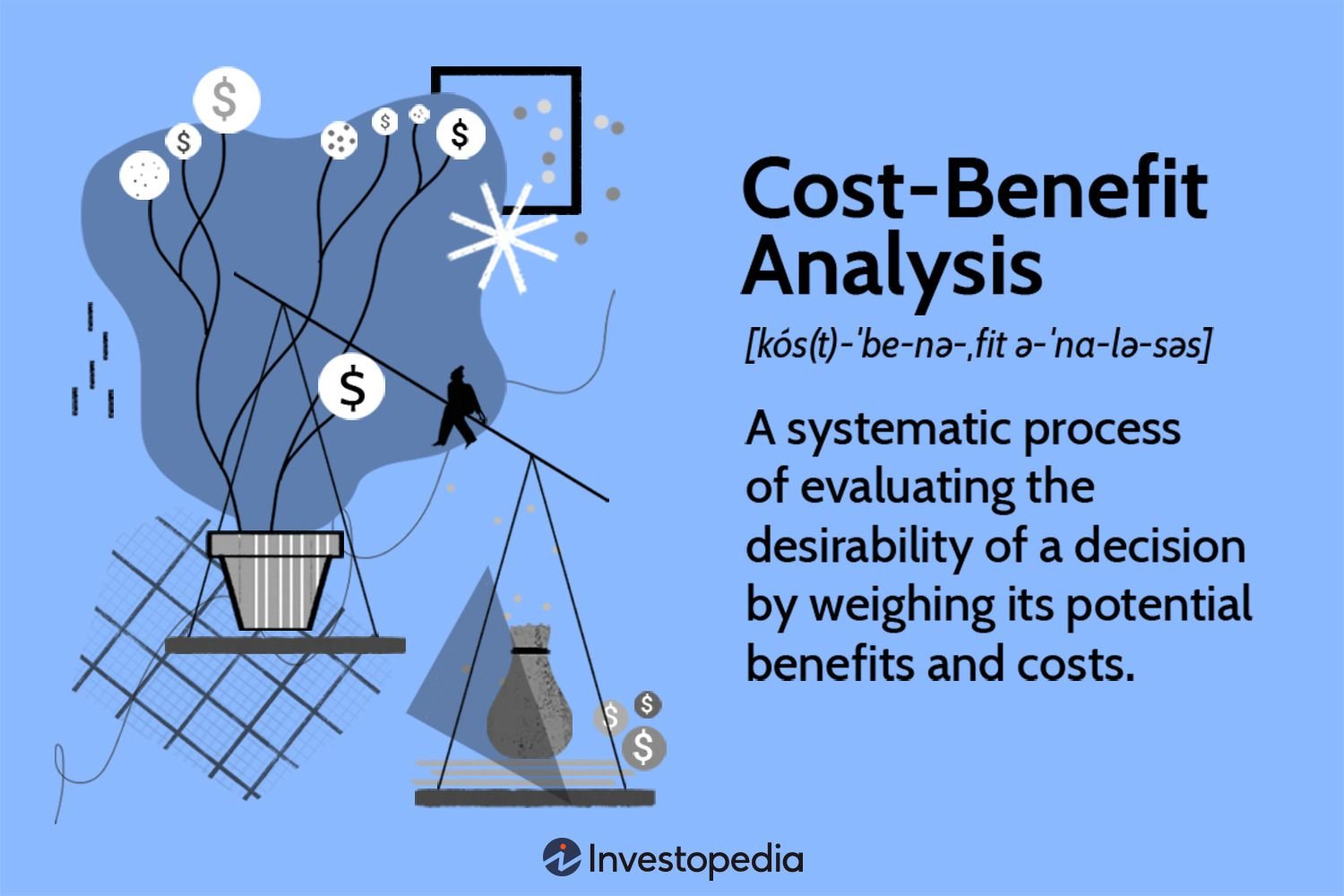Cost-benefit analysis in project management is a crucial tool that helps organizations make informed decisions. It provides a systematic approach to evaluate the potential benefits and costs associated with a project, enabling stakeholders to weigh the overall value before making any commitments. By considering both financial and non-financial factors, cost-benefit analysis ensures a comprehensive assessment of the project’s feasibility and potential impact. In this article, we will explore the key concepts and benefits of cost-benefit analysis in project management, empowering you to make well-informed decisions for your projects. Let’s dive in and unravel the world of cost-benefit analysis in project management.
What is Cost-Benefit Analysis in Project Management?
Introduction
In the world of project management, making informed decisions is crucial for the success of any project. One effective decision-making tool that project managers rely on is cost-benefit analysis (CBA). Cost-benefit analysis helps evaluate the potential benefits and costs of a project or a proposed action, enabling project managers to make data-driven decisions. It allows them to compare the expected benefits of taking a particular course of action against the anticipated costs, aiding in prioritizing projects and maximizing returns on investment.
Why is Cost-Benefit Analysis Important?
Cost-benefit analysis plays a vital role in project management by providing a structured approach to decision-making. It enables project managers to:
1. Identify and quantify potential benefits: By conducting a cost-benefit analysis, project managers can identify and quantify both the tangible and intangible benefits associated with a project. Tangible benefits can include cost savings, revenue generation, or increased productivity, while intangible benefits may relate to improved customer satisfaction or brand reputation.
2. Assess project feasibility: By analyzing the costs and benefits of a project, project managers can determine its feasibility. They can evaluate whether the potential benefits outweigh the costs, helping them decide whether to proceed with the project or explore alternatives.
3. Prioritize projects: In organizations with limited resources and multiple project initiatives, cost-benefit analysis serves as a valuable tool for prioritizing projects. By comparing the expected benefits and costs of different projects, project managers can allocate resources to projects with the highest return on investment.
4. Justify project decisions: Cost-benefit analysis provides project managers with a tangible basis for justifying their decisions. The analysis helps stakeholders understand the rationale behind project-related choices, enhancing transparency and credibility.
The Process of Cost-Benefit Analysis
To conduct a comprehensive cost-benefit analysis, project managers follow a systematic process. Although the specific steps may vary depending on the project and organization, the general framework typically involves the following stages:
1. Identify the Project Objectives
Before embarking on a cost-benefit analysis, project managers must clearly define the project objectives. Identifying these objectives serves as a foundation for evaluating the costs and benefits associated with the project. It allows project managers to align the analysis with the project’s purpose and desired outcomes.
2. Identify Costs and Benefits
In this stage, project managers identify and categorize all the potential costs and benefits associated with the project. Costs can include direct expenses (e.g., materials, equipment, labor) and indirect costs (e.g., training, maintenance). Benefits can be both quantitative and qualitative, such as increased revenue, improved customer satisfaction, or enhanced employee morale.
3. Assign Monetary Value
To compare costs and benefits on an equal footing, project managers must assign monetary values to each item. While some costs and benefits are straightforward to quantify (e.g., direct expenses), others may require estimation or expert judgment. Assigning monetary values helps in aggregating and analyzing the data more effectively.
4. Estimate Timeframes
In addition to assigning monetary values, project managers need to estimate the timeframes over which costs and benefits will occur. This allows for a more accurate assessment of the project’s financial viability. Timeframes may vary for different costs and benefits, and project managers should consider potential risks and uncertainties in their estimations.
5. Calculate Net Present Value (NPV)
To determine the overall financial viability of the project, project managers calculate the net present value (NPV) by subtracting the total discounted costs from the total discounted benefits. NPV takes into account the time value of money, offering a more accurate representation of the project’s potential return.
6. Evaluate Sensitivity and Risk
In this stage, project managers analyze the sensitivity of the analysis to changes in crucial variables such as costs, benefits, and timeframes. They also assess the potential risks associated with the project and their impact on the overall analysis. This evaluation helps project managers gauge the robustness of their findings and make informed decisions considering different scenarios.
7. Make the Decision
Based on the outcomes of the cost-benefit analysis and considering the organization’s objectives, constraints, and risk tolerance, project managers make a decision regarding the project. The decision may involve continuing with the project, modifying it, or choosing an alternative course of action.
Tools and Techniques for Cost-Benefit Analysis
Several tools and techniques are commonly used in cost-benefit analysis to enhance the accuracy and effectiveness of the evaluation. These include:
1. Payback Period
The payback period calculates the time it takes for an investment to generate enough cash flow to recover its initial cost. It provides project managers with a measure of how quickly they can expect to regain their investment, allowing them to assess the project’s financial feasibility in the short term.
2. Return on Investment (ROI)
ROI measures the profitability of an investment by comparing the net gains or losses with the initial investment. It helps project managers determine the efficiency and profitability of a project, enabling them to assess its long-term financial viability.
3. Cost-Benefit Ratio
The cost-benefit ratio compares the total discounted benefits to the total discounted costs. It provides a simple and straightforward analysis, indicating whether the benefits outweigh the costs or vice versa. Project managers can use this ratio to compare different project options and select the most financially favorable one.
4. Break-Even Analysis
Break-even analysis identifies the point at which total costs equal total benefits, resulting in no net gain or loss. This analysis helps project managers understand the minimum performance level required for a project to become financially viable. It assists in determining the required sales volume or output level to cover all costs.
5. Decision Trees
Decision trees are visual tools that project managers use to evaluate the potential outcomes of different decisions. By mapping out various decision paths and assigning probabilities and values to each outcome, decision trees assist in understanding the potential risks and rewards associated with different choices. They aid project managers in making decisions under uncertainty.
Cost-benefit analysis is a powerful tool in project management that assists project managers in making informed and data-driven decisions. By evaluating the potential costs and benefits of a project, project managers can prioritize initiatives, allocate resources effectively, and enhance the overall success of their projects. Understanding the process and utilizing various tools and techniques enables project managers to maximize returns on investment and contribute to the long-term growth of their organizations.
Cost Benefit Analysis for Development Projects
Frequently Asked Questions
Frequently Asked Questions (FAQs)
What is cost-benefit analysis in project management?
Cost-benefit analysis is a technique used in project management to evaluate the financial costs and benefits associated with a project. It involves comparing the expected costs of implementing a project with the anticipated benefits to determine whether the project is economically feasible.
How does cost-benefit analysis help in project management?
Cost-benefit analysis helps project managers make informed decisions by quantifying the monetary value of the project’s benefits and comparing them to the costs. It provides a systematic approach to assess the financial viability of a project and ensures that resources are allocated efficiently.
What are the key steps involved in conducting a cost-benefit analysis?
The key steps in conducting a cost-benefit analysis include identifying the costs and benefits, assigning a monetary value to each, estimating the time frame for both costs and benefits, discounting future values, and comparing the total costs and benefits to determine the net value or profitability of the project.
What are the benefits of using cost-benefit analysis in project management?
Using cost-benefit analysis in project management helps in identifying potential risks, evaluating the financial viability of a project, optimizing resource allocation, facilitating communication and stakeholder buy-in, and making objective decisions based on quantitative data.
Are there any limitations to cost-benefit analysis?
Yes, cost-benefit analysis has certain limitations. It requires accurate data and reliable estimates, which may not always be available. It also assumes that all costs and benefits can be quantified and assigned a monetary value, which is not always possible. Additionally, it does not account for intangible or non-monetary factors.
Can cost-benefit analysis be used for all projects?
Cost-benefit analysis can be applied to various types of projects, including those in the private and public sectors. However, it may be more suitable for projects with measurable financial outcomes, where the costs and benefits can be quantified and compared effectively.
What is the role of cost-benefit analysis in project decision-making?
Cost-benefit analysis plays a crucial role in project decision-making by providing a clear understanding of the financial implications and potential returns of a project. It helps in evaluating alternative project options, optimizing resource allocation, and determining whether a project aligns with the organization’s strategic goals.
How can cost-benefit analysis be used to justify project investments?
By conducting a cost-benefit analysis, project managers can determine the anticipated return on investment (ROI) for a project. This information can be used to justify the project’s financial feasibility and secure necessary funding or resources from stakeholders or executives.
Final Thoughts
Cost-benefit analysis in project management is a crucial tool for decision-making. By evaluating the costs and potential benefits of a project, organizations can make informed choices about resource allocation. This analysis involves identifying and quantifying all costs associated with a project, including both direct and indirect expenses. It also examines the anticipated benefits, such as increased revenue or improved operational efficiency. By weighing these factors, project managers can determine whether a project is financially viable and aligns with organizational goals. Ultimately, cost-benefit analysis provides a structured approach to evaluate the potential return on investment and helps organizations make informed decisions regarding project viability and prioritization.



